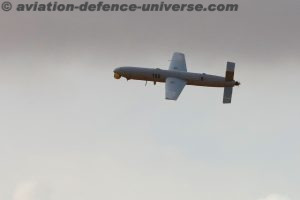- The 2024 Guinness Book of World Records includes for the first time the “highest wind speed recorded by a USV,” earned during Saildrone and NOAA’s 2021 Atlantic Hurricane mission.
Alameda, California. 12 September 2023. Saildrone, the world’s leading provider of ocean data using uncrewed surface vehicles (USVs), and the National Oceanic and Atmospheric Administration (NOAA) announced today a new world record for the highest wind speed recorded by a USV. Saildrone Explorer SD 1045 measured 109.83 knots (126.4 mph) as it passed through the eyewall of Category 4 Hurricane Sam in 2021. The Guinness Book of World Records is including the record for the first time in the 2024 edition, on sale this week.
SD 1045 made global headlines when it spent 24 hours inside Hurricane Sam, delivering the world’s first video footage from inside a major hurricane barreling across the Atlantic Ocean. Battling massive waves and sustained winds over 100 mph, SD 1045 not only survived intact but collected important data about the physical interactions between the ocean and atmosphere that revealed new insights about hurricane intensification.
“To me, this was a really exciting thing. To see the data continuously streaming in through the hurricane without interruptions, despite the extremely harsh conditions—it was a highlight of my career,” said Greg Foltz, a NOAA oceanographer and one of the mission’s principal investigators.
SD 1045 is an Explorer-class USV, designed, manufactured, and operated by Saildrone. Saildrone Explorers are 7 meters long and typically have a 5-meter-tall wing sail, similar to an airplane, which provides forward propulsion. The Explorers used for extreme weather monitoring like the NOAA Atlantic Hurricane mission are equipped with a shorter, more robust “hurricane” wing, specially designed to withstand the conditions inside a tropical cyclone.
“This record is a testament to the unique endurance of the Saildrone platform. We are proud to have engineered a vehicle capable of operating in the most extreme weather conditions on earth, to deliver data that can help to advance understanding of these powerful storms and protect our coastal communities,” said Saildrone Founder and CEO Richard Jenkins.
After Hurricane Sam, SD 1045 sailed to Bermuda, where it was retrieved and shipped back to Saildrone headquarters in California. The vehicle returns to duty this summer as one of 12 vehicles deployed for the 2023 mission. SD 1045 is stationed off the coast of South Carolina in a particularly complex area of the ocean where relatively shallow waters combined with the strong, warm currents of the Gulf Stream supply energy to passing storms.
The Atlantic Hurricane mission is part of ongoing NOAA research into how and why some relatively mild tropical storms rapidly intensify into major hurricanes, which is particularly destructive when it happens just before landfall. The data will also be archived by NOAA’s National Environmental Satellite, Data and Information Service (NESDIS) and sent by NOAA to the World Meteorological Organization (WMO)’s Global Telecommunication System (GTS), where it is available for the world’s major forecast centers—some 20 agencies worldwide, including NOAA. The National Hurricane Center included observations from SD 1045 into its August 30 bulletin as Tropical Storm Idalia passed over South Carolina.



























































































































